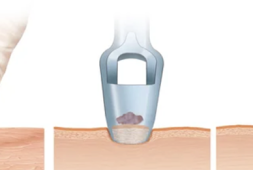Major Cancer Breakthrough Discovered To Boost Immune Cells Without Harmful Side-Effects Using Protein Cytokines

A novel method has been developed to safely enhance immune cells’ ability to combat cancer, without causing harmful side effects such as hair loss.
At Virginia Tech, scientists have devised a groundbreaking immunotherapy technique aimed at localizing cancer-killing cytokines within tumors, thereby improving the effectiveness of current treatments.
Immunotherapy utilizes the body’s immune system to target potentially lethal cancer cells. Researchers at the school’s College of Engineering have transformed a treatment procedure into an innovative practice.
Their approach involves activating and “reprogramming” immune cells to target and eliminate cancer cells.
This method often employs the use of cytokines, small protein molecules that act as intercellular messengers and are released by the body’s immune cells to coordinate their response.
Professor Rong Tong, who’s pictured above to the left, explained chemical engineering, “Cytokines are potent and highly effective at stimulating the immune cells to eliminate cancer cells.”
“The problem is they’re so potent that if they roam freely throughout the body, they’ll activate every immune cell they encounter, which can cause an overactive immune response and potentially fatal side effects.”
In contrast to earlier methods, the new technique guarantees that immune cell-stimulating cytokines remain localized within tumors for weeks, while maintaining the cytokine’s structure and reactivity levels.
Stimulating the body’s immune system to target tumors has long been seen as a promising alternative to traditional cancer treatments, such as chemotherapy, which cannot differentiate between healthy and cancerous cells.
Professor Tong explains that while delivering cytokines can “jump-start” immune cells in the tumor, excessive stimulation of healthy cells can lead to severe side effects.
“Scientists determined a while ago that cytokines can be used to activate and fight against tumors, but they didn’t know how to localize them inside the tumor while not exposing toxicity to the rest of the body,” he said.
“Chemical engineers can look at this from an engineering approach and use their knowledge to help refine and elevate the effectiveness of the cytokines so they can work inside the body effectively.”
The team aimed to achieve a balance between eliminating cancer cells and preserving healthy ones by designing specialized particles of different sizes to guide drug delivery.
These micro-particles are engineered to remain within the tumor environment upon injection into the body.
Professor Wenjun ‘Rebecca’ Cai, along with her students in materials science and engineering, conducted research on measuring the surface properties of the particles.
Prof. Tong explained, “Surface engineering and characterization, along with particle size, play important roles in controlled drug delivery, ensuring prolonged drug presence and sustained therapeutic effectiveness.”
“Our strategy not only minimizes cytokine-induced harm to healthy cells, but also prolongs cytokine retention within the tumor. This helps facilitate the recruitment of immune cells for targeted tumor attack.”
She explains that the next step is to combine the new localized cytokine therapy method with commercially available FDA-approved checkpoint blockade antibodies. These antibodies reactive the tumor immune cells that have been silenced, enabling them to combat the cancer cells.
“When there is a tumor inside the body, the body’s immune cells are being deactivated by the cancer cells,” she says.
“The FDA-approved checkpoint blocking antibody helps ‘take off the brakes’ that tumors put on immune cells, while the cytokine molecules ‘step on the gas’ to jump-start the immune system and get an immune cell army to fight cancer cells. These two approaches work together to activate immune cells.”
Creating a Strategy to Eradicate Cancer Cells
The combination of checkpoint antibodies with particle-anchored cytokines successfully eliminated many tumors in the study, published in the journal Science Advances.
The team suggests that the new method of attaching cytokines to particles could also be utilized for delivering other types of immune-stimulatory drugs.
“The whole class of drugs that are employed to jump-start the immune system to fight cancer cells has largely not yet succeeded. Our goal is to create novel solutions that allow researchers to test these drugs with existing FDA-approved therapeutics, ensuring both safety and enhanced efficacy.”
Prof. Cai views their project as “a perfect marriage between chemical engineering and materials science.”
“This collaboration not only accelerates immunotherapy research, but also has the ability to transform cancer treatment,” she says.



